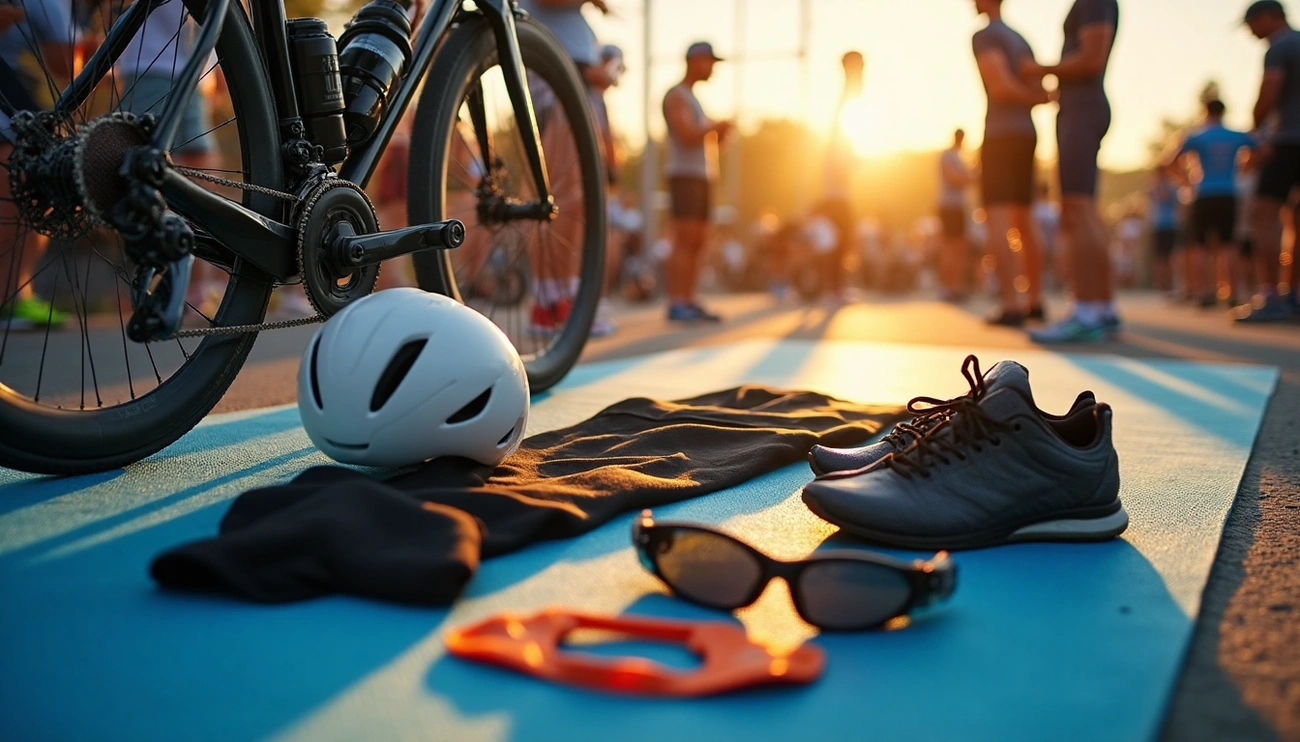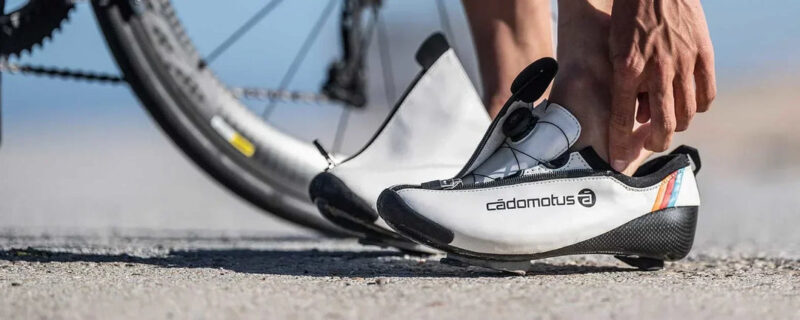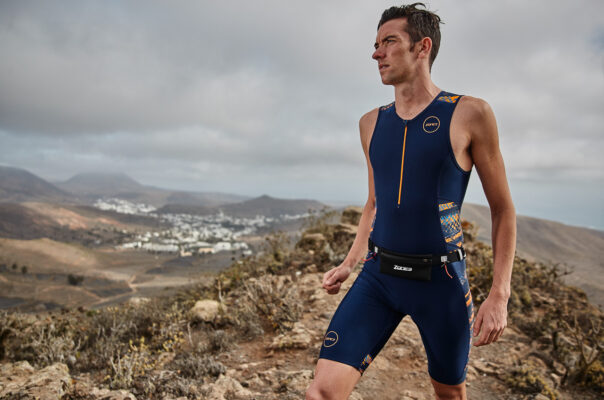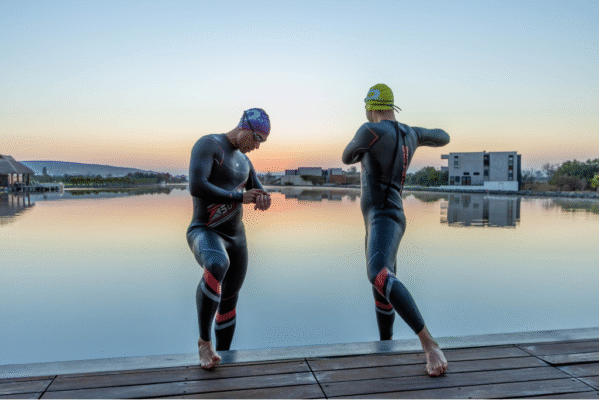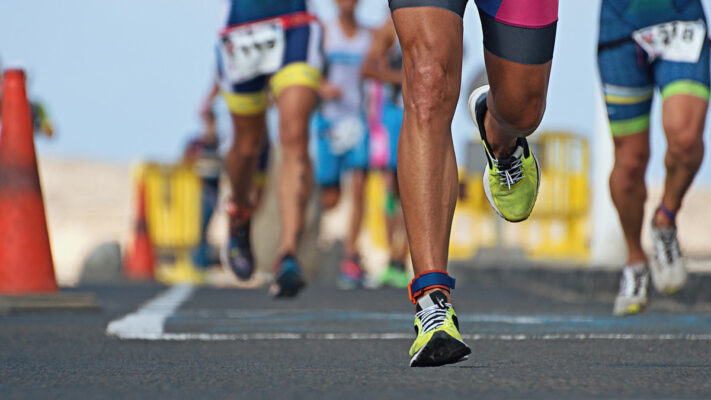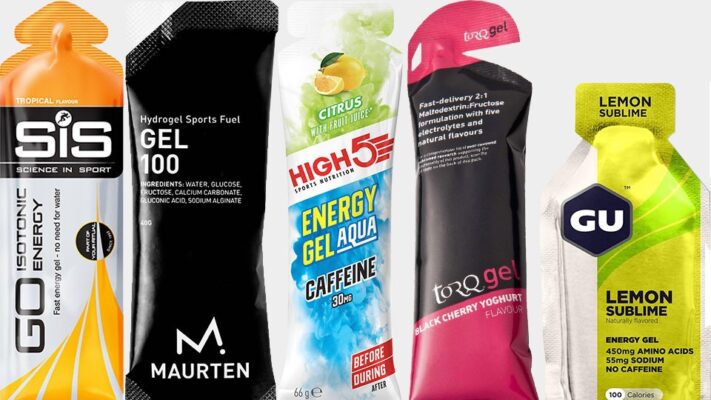posts
15 Must-Haves: Essential Beginners Tri-Gear
Introduction
Starting your triathlon racing journey is an exciting step — but walking into a gear shop or browsing online can feel overwhelming. There’s so much equipment out there, from advanced tri suits to high-end bikes, that many beginners don’t know where to start.
At Tri-n-Win, we believe that great performance starts with the right essentials — not the most expensive ones. You don’t need to buy everything at once; focus on quality, comfort, and practicality. Here’s a list of 15 must-have beginner triathlon gear items that will help you train efficiently, race comfortably, and get the best experience out of your triathlon journey.
1. Triathlon Racing Bike — choose fit and reliability over flash
Your bike is the single biggest piece of equipment in triathlon racing performance. For beginners, a reliable road bike with a comfortable geometry is usually a better choice than an expensive time-trial bike. Prioritise frame size, saddle comfort, brake and gear quality, and a professional bike fit — a good fit reduces joint stress and improves power transfer.
Maintenance matters: learn to check tyre pressure, clean and lube the chain, and keep bolts torqued. These small checks prevent mechanical failures and keep your triathlon racing bike efficient. If the budget is tight, buy a well-maintained used bike from a reputable shop; get it checked and fitted before you race.
Training tip: Do a few long rides on the bike you plan to race to be sure it’s comfortable for race distances and to dial in saddle/handlebar position.
2. Triathlon Racing Shoes — quick on/off and comfortable
Triathlon racing shoes often differ from regular cycling shoes because they’re optimised for fast transitions and drainage. Look for shoes with wide openings, quick straps or BOA systems, and stiff soles for power transfer. For running, choose lightweight trainers with good cushioning and a fit that avoids blisters — never race in brand-new shoes.
Practice transitions (shoe on/off) frequently: set up your shoes on the bike in training so you can get in and out within seconds. If you plan to use clip-less pedals, practice clipping in and out in a safe, flat area until it’s second nature.
Buying tip: If you’ll split the budget between cycling and running, prioritise one pair of solid cycling shoes that fit your pedal system and one pair of trusted running shoes for race day.
3. Triathlon Racing Belt — fast, simple, and high ROI
A triathlon racing belt is inexpensive but saves real time and hassle. Instead of safety pins, you clip your bib to the elastic belt and spin it around between bike and run. Look for a low-profile, non-bouncy belt with elastic loops for gels and a secure clip for the bib.
A belt also keeps your race number visible for officials and photographers, and can carry small items (keys, gels). Try different widths — find one that holds the bib flat without shifting while you run. For added convenience, pre-thread one or two gel loops.
Race practice: Use the belt in every brick workout, so rotating it from back (bike) to front (run) becomes automatic.
4. Tri Suit or Tri Top & Shorts — comfort across three sports
A one-piece tri suit is fast and convenient — you swim, bike, and run in the same garment. It reduces chafing and saves transition time. Two-piece setups (tri top + shorts) are more flexible and often cheaper; they let you use the top alone after the bike or swap shorts for long runs.
Fit is key: choose a suit with chamois appropriate for triathlon (thin, fast-drying) and flat seams to prevent rubbing. Test it in open water and on long rides. For cold water swims, your suit choice pairs with a wetsuit, so make sure it’s comfortable underneath.
Practical note: Do a full dress rehearsal (swim + bike + run) in your race kit to confirm fit, comfort, and that zippers, pockets, and seams behave as expected.
5. Helmet — safety, fit, and comfort first
A certified helmet is non-negotiable. Beyond certifications (CE/CPSC), focus on fit: it should sit level, feel snug but not tight, and strap securely without pressure points. Ventilation and weight matter for comfort on long rides; aerodynamic helmets help at higher speeds but are only useful if the fit and comfort are right.
Practice putting it on quickly during transitions and unclipping/fastening while moving slowly. Never compromise safety for style — replace helmets after a crash or when they show signs of damage.
Maintenance: Clean the pads and straps regularly and check that retention systems and buckles work smoothly.
6. Goggles — fit, lens choice, and anti-fog
Good goggles make open-water swimming far more pleasant. Look for a low-profile, leak-free fit and adjustable straps. Have two pairs: clear or light-tinted for low light/indoor pools and darker or mirrored lenses for sunny open-water swims. Anti-fog treatment (or pre-treated goggles) is a must — test them in a cold/hot shower before race day to avoid surprises.
Practice: Swim with the goggles you intend to race in during training to confirm seal, comfort, and sight-lines. Replace them if the strap stretches or the seal degrades.
7. Wetsuit (if you’ll do open water) — buoyancy and mobility
A triathlon-specific wetsuit improves buoyancy and keeps you warmer during open-water swims. These suits are typically more flexible in the shoulders for the swim stroke range of motion. Try a rental if you’re unsure — it’s an affordable way to test the fit and feel.
Fit is critical: a too-tight wetsuit restricts breathing and movement; too loose creates drag and rub. Practice swimming in the suit to find the right flexibility and decide if you’ll swim with or without it (some races have wetsuit rules based on water temperature).
Tip: Apply a small amount of lubricant (wetsuit wax or safe lubricant) to the zipper and seams to ease donning and doffing.
8. Running Shoes — gait-matched and durable
Your running shoes should match your foot strike and mileage load. Visit a specialist running store for gait analysis and try shoes with similar midsole thickness and support similar to what you train in. For triathlons, lightweight trainers with faster heel-to-toe transition often work best, but comfort and injury prevention come first.
Avoid breaking in a brand-new race shoe on race day — log at least 50–100 km in new shoes before racing. If you plan sock-less transitions, test for blister hot spots in training, and use anti-blister tape where needed.
9. Sunglasses — protection and stability
Sunglasses protect from wind, glare, and debris. For triathlon racing, choose wraparound designs that stay put at high speed and reduce peripheral glare. Lightweight frames and rubber nose pads/temples improve grip when sweating.
Photochromic lenses are a high-value option for variable conditions (early starts or changing weather). Always test in similar light conditions to ensure they won’t under/over-darken when you need them most.
10. Hydration System — bottles, cages, and aero options
Hydration strategy depends on race length and climate. Simple bottle cages with standard bottles work fine for beginners; practice grabbing and replacing bottles on the go. For longer events, consider an aero hydration system (front-mounted bottle) or a rear-mount that reduces wind resistance.
Practice drinking while keeping a steady cadence on the bike — spillage is normal at first, but you’ll get better. Learn to secure bottles so they don’t bounce out on bumpy roads.
Practical rule: Aim to carry enough to replace fluids you’ll use in training sessions of equivalent intensity and duration.
11. Flat Repair Kit — be race-problem ready
A compact flat kit (spare tube, tyre levers, CO₂ cartridge or mini pump, multi-tool) is essential for bike self-sufficiency. Learn how to change a tube quickly and practice once or twice under no pressure. In many races, you’ll have roadside support, but being able to fix a flat can keep you in the race.
Keep the kit in a saddle bag or seat pack and label it. Also, know how to remove the wheel and reassemble hydraulic or mechanical disc brakes safely.
12. Race Watch / GPS — pacing and multi-sport tracking
A race watch with triathlon or multi-sport modes tracks time, distance, pace, and heart rate across legs — invaluable for learning pacing and sticking to a plan. You don’t need the most expensive model; a reliable GPS watch that handles swim metrics and transitions is enough.
Use it to practice pacing zones in training and to program simple race alerts (e.g., “hold pace X for first 20 minutes”). Test battery life, GPS lock behaviour, and transition mode switching before race day.
13. Anti-Chafing & Body Care — comfort all race long
Chafing is a small issue that becomes a big problem on race day. Use anti-chafe balm in common hot spots (underarms, inner thighs, nipples for men, around the bra line). Apply waterproof sunscreen to exposed skin, and consider a moisturiser routine post-race to aid skin recovery.
Carry a small toiletry kit for pre-race touch-ups and a spare tube of anti-chafe in your transition bag.
14. Transition Bag — organisation = calmness
A dedicated transition bag with compartments for wet/dry gear makes race mornings calm and efficient. Choose a design with easy access pockets and a durable, water-resistant bottom. Pack like you’ll race: helmet, goggles, triathlon racing belt, shoes, nutrition, sunscreen, and a towel.
Label pockets for “T1” and “T2” items and keep spare laces, safety pins, and an extra gel inside. This small system reduces stress and prevents last-minute forgetfulness.
15. Nutrition & Energy Gels — test, measure, and stick to it
Fuelling is highly individual. Test gels, chews, bars, and electrolyte mixes in training so you know what your stomach tolerates. A common beginner strategy is 20–30g of carbs every 30–45 minutes in long efforts; adjust based on weight, intensity, and temperature.
Plan how to carry fuel (bottle cages, aero bars, belt loops) and time your intake — practice taking a gel on the bike and during a brick to ensure digestion is fine for the run. Never introduce a new product on race day.
Final Thoughts from Tri-n-Win
Stepping into the world of triathlon racing is more than just a sport — it’s a lifestyle of discipline, balance, and continuous self-improvement. The right gear doesn’t guarantee victory, but it makes every training session smoother and every race experience more enjoyable. Think of your triathlon setup as your personal toolkit: every piece, from your triathlon racing bike to your triathlon racing shoes and triathlon racing belt, works together to support your performance and confidence.
As a beginner, you don’t need to buy everything at once or chase the latest gear trends. What matters most is fit, comfort, and reliability. A well-fitted bike will serve you longer than an expensive model that doesn’t suit your body. Shoes that fit perfectly and reduce fatigue are worth more than the flashiest brand. Even small tools like your race belt or anti-chafe balm can make the difference between a smooth finish and a frustrating experience.
At Tri-n-Win, we encourage new triathletes to focus on training smart and gearing up gradually. Each race teaches you something new — about your endurance, technique, and preferences. As you grow more confident, you’ll learn which gear upgrades truly enhance your racing and which are just “nice to have.”
Finally, remember this: consistency and preparation always beat perfection. The most successful triathletes aren’t those with the most expensive gear, but those who train with intention, respect recovery, and show up ready to give their best effort.
So, gear up wisely, trust your training, and enjoy every moment on the course. Whether it’s your first sprint or your first Ironman, Tri-n-Win is here to help you race stronger, smarter, and happier — one triathlon at a time.

